v2024.12.05-2232
By Moduverse Team
/
/
Achieving Chain Abstraction
Our previous article introduced the Chain Abstraction stack, which provided a comprehensive view of the components that form chain abstraction from a transaction perspective. One significant insight from the article is the complexity of chain abstraction, which is also evident from the multitude of proposals submitted by the Ethereum ecosystem for chain abstraction. This article delves into key proposals propelling us towards realizing chain abstraction within the Ethereum ecosystem.
Chain Abstraction
Chain abstraction (CA) seeks to hide the technical complexities of managing assets and transactions across different blockchains, presenting a seamless experience akin to interacting with a single network. CA is vital for consumer adoption and can potentially revolutionize the blockchain industry, addressing user experience (UX) challenges arising from the modular topology of blockchains.
The chain abstraction stack we presented in our previous article outlines a four-layer architecture for chain abstraction:
- User Interface Layer: The user interaction gateway, where dApps interface with users. This layer also manages accounts and transactions, ensuring secure access.
- Abstraction and Optimization Layer: This layer optimizes intent fulfilment across chains by specifying outcomes and solving them efficiently and securely.
- Interoperability Layer: This layer is used for secure data and message transmission between chains.
- Execution Layer: Ensures accurate on-chain updates finalizing transactions.
Chain abstraction has been a topic of discussion within the Ethereum community for several years. Several proposals have been created, discussed, and implemented, reflecting the community's collaborative spirit. These efforts aim to bring the ecosystem closer to the unified and seamless user experience chain abstraction promises to achieve. While most of these proposals revolve around account abstraction (AA), they all contribute to the overarching goals of chain abstraction.
In Ethereum, proposals are presented as EIPs or Ethereum Improvement Proposals. A Standard type of EIP can represent a change in any aspect of Ethereum and can impact Ethereum's core, networking, interfaces, or applications. ERCs are EIPs that specifically present application-specific standards and changes.
The Need for Standards in Chain Abstraction
The blockchain ecosystem is inherently fragmented, with diverse protocols, consensus mechanisms, and token standards across networks creating significant challenges.
- Interoperability Barriers: Without standardized protocols, cross-chain interactions—such as transferring assets or executing transactions—require custom bridges or complex processes, leading to inefficiencies and potential errors.
- Poor User Experience: Users must manage multiple wallets, understand chain-specific tokens, and navigate technical processes like bridging, which deter mainstream adoption.
- Security Risks: Non-standardized implementations of cross-chain mechanisms can introduce vulnerabilities, such as bridge hacks that cost billions.
- Scalability Constraints: A lack of common standards hinders developers from building scalable, interoperable dApps, limiting ecosystem growth and innovation.
ERCs and EIPs, often used interchangeably, are instrumental in addressing these challenges by providing a unified framework for developers and protocols. These standards reduce development costs and foster collaboration across projects, leading to a cohesive ecosystem where users can seamlessly interact with multiple chains as if they were a single network. This is a crucial step towards achieving the vision of chain abstraction, where technical complexities are abstracted away, and blockchain technology becomes accessible to a broader audience, ensuring a better user experience.
Standards for Chain Abstraction
ERC-7683
ERC-7683 was jointly proposed by Across and UniswapX in 2024. Its goal is to allow siloed intent-based transaction systems to share a universal filler (a.k.a. solver or relayer) network, thereby creating a better-interconnected cross-chain ecosystem.
Most current intent-based transaction systems work in siloes, which means that they use their networks to facilitate order processing. These individual solver networks, or fillers, as called in the ERC, are not shared between the systems, which has resulted in fragmentation in order processing. This fragmentation eventually impacts the user experience, as the end user may not get the best possible outcome for their intent. By bringing these filler networks together, ERC-7683 aims to bring about interoperability between these systems and thus improve the end-user experience.
ERC-7683 defines the critical aspects of intent description and execution that all intent-based transaction systems can follow. This ensures that intents from one ecosystem can easily flow into a different filler network without restriction.
ERC-7683 is currently in the draft phase and under discussion. For details on this proposal, navigate to the links below:Link 1, Link 2, Link 3
Account abstraction
Account abstraction plays an essential part in CA. Most of the UX problems arise from user accounts (EOA wallet accounts) being very limited in functionality. This makes it hard to make UX improvements like single sign-on, bundling of transactions, gasless transactions, and many more, pushing us away from CA's vision.
By having smart wallet accounts instead of EOAs that can be programmed to include several additional features, AA addresses the limitations of EOAs. AA also helps to improve cross-chain UX. Smart contract wallets support multiple chains, meaning users do not need to maintain separate wallets for different chains and reduces reliance on manual bridging.
Ethereum has been working to make AA feasible for a long time, and a massive list of changes has been suggested in this regard. Although completing native AA on Ethereum, which means replacing all EOAs with smart wallet addresses, will take time, several other proposals bring us closer to achieving native AA.
Here are some of the prominent standards:
ERC-4337
ERC-4337, first suggested in September 2021, is an Ethereum standard that enables account abstraction (AA) without modifying the Ethereum core protocol. It allows users to use Smart Contract Accounts rather than EOAs (Externally Owned Accounts) as their primary account.
Adopting a smart contract account, as proposed in ERC-4337, brings many benefits previously unavailable with EOAs. For instance, multiple transactions can now be bundled into one, enhancing speed and reducing costs. Security gets bolstered with the introduction of 2FA, and users can now log in using familiar platforms like email or social media, eliminating the need to remember a wallet passcode and key.
ERC-4337 also introduced the concept of paymasters, a mechanism that allows users to pay for their transactions in any ERC-20 token, not just ETH.
The standard, co-authored by prominent Ethereum community members, including Vitalik Buterin, went live on the Ethereum mainnet in March 2023. Since its release, ERC-4337 has been adopted by almost all rollups and will be an essential entry point towards upcoming standards like RIP-7560.
It is essential to know that although ERC-4337 is considered the leading standard for AA, it still has several downsides.
Read more about ERC-4337 by following these links.Link 1, Link 2
EIP-7702
EIP-7702 addresses one key limitation of ERC-4337. Although ERC-4337 introduced AA, enabling users to create smart contract accounts, it did not address how existing EOAs could become smart contract accounts.
With ERC-4337, users have to create a new smart contract wallet, which means that their existing EOA wallets cannot enjoy the advantages of AA. With EIP-7702, users will now have the opportunity to change their existing EOA wallets to smart contract wallets by providing a simple authorization via the wallet application, thereby enabling smart wallet functionalities like transaction batching, gas fee sponsorship, and others.
7702 is an EIP and not an ERC because it requires changes to the core Ethereum protocol, requires a hard fork and is scheduled for the upcoming Pectra upgrade. For more details on this EIP, refer to the links below.Link 1Link 2
RIP-7560
L2s are the gateway to an ever-growing quantum of user transactions coming into Ethereum, which makes AA a necessity for them. Currently, they are using a modified version of ERC-4337 for their environments, but this has again led to fragmentation, where wallets cannot interop between the L2s. So, a new RIP or Rollup Improvement Process started, where L2s can come together with the Ethereum foundation and propose changes for the collective.
RIP-7560, proposed in November 2023, intends to bring native AA to L2s by enshrining all the design decisions made as part of ERC-4337 into the L2s. In other words, the entities and concepts defined in 4337, like paymasters, bundlers, and others, become part of their consensus, creating a unified AA ecosystem of L2s.
As of now, it is not clear if any rollups have implemented RIP-7560 on mainnet, but as said by the speaker in the Devcon presentation, it is in devnet, and many projects are working on it, including Kroma Network and other OP stack rollups. For more details on this RIP, refer to the links below.Link 1, Link 2
EIP-7701
Like RIP-7560, EIP-7701 aims to enshrine AA within the Ethereum protocol. It directly addressed the key issues with ERC-4337, namely high gas overheads and the reliance on external entities like Bundlers, which reduces censorship resistance.
EIP-7701, proposed on May 1, 2024, by key Ethereum contributors, including Vitalik Buterin, introduces native account abstraction, allowing for custom validation and gas payment logic for transactions. It splits transactions into validation, execution, and post-operation phases, allowing for more granular control and enabling scenarios where custom logic determines transaction validity before execution, and post-operation logic can handle additional tasks.
Specifically, it enables:
- Transaction bundling, where multiple actions execute as a single transaction.
- Gas sponsorship, where one contract can pay gas fees for a transaction initiated by another.
- Custom permissions schemes allowing wallets to define their own rules for transaction acceptance.
EIP-7701 is currently in draft form, and there are no plans to include it in Pectra or Fusaka hard forks. For more information on this EIP, please refer to these links.Link 1, Link 2
EIP-3770
EIP-3770 is a technical standard designed to enhance the interoperability and user experience in the Ethereum ecosystem by addressing the ambiguity of Ethereum addresses in a multichain environment.
The standard introduces a new address format for wallets and decentralized applications (dApps) to display chain-specific addresses. This is particularly important as the same address could represent an Externally Owned Account (EOA) on one chain and a smart contract on another, leading to potential errors such as fund losses, as Vitalik famously mentioned in a story of how he lost $100 while making a deposit.
EIP-3770 addresses this issue by standardizing a format where addresses get prefixed with a human-readable chain identifier. For example, an address might be displayed as "eth:0xC2f3...D742D" for Ethereum Mainnet, where "eth" is the chain short name. The human-readable prefix allows wallets and interfaces to verify the correct chain, reducing the likelihood of mistakes such as sending funds to a smart contract wallet not deployed on the intended chain.
This format facilitates seamless cross-chain interactions by embedding chain information directly into the address format. Developers can now build applications that handle multiple chains without requiring users to switch networks manually, enhancing the overall usability of the Ethereum ecosystem.
The proposal is currently in draft phase. For more information, please go to these links.Link 1, Link 2
ERC-7786
ERC-7786, proposed by OpenZeppelin with support from Interop Labs (creators of Axelar Network), is designed to create a standard interface for decentralized applications (dApps) to send and receive messages across multiple blockchains securely. It aims to address the lack of portability between bridges due to diverse proprietary interfaces, enabling generic cross-chain contract development. The modular standard allows bridge-specific features while providing universal access for simple message transmission.
Existing cross-chain messaging protocols (a.k.a bridges) often implement proprietary interfaces, which limits their ability to work together and prevents generic cross-chain contract development. ERC-7786 provides a universal interface for smart contracts to send and receive messages containing arbitrary data across different blockchains. This standardization is crucial for chain abstraction, as it ensures that dApps can communicate with any compliant cross-chain messaging protocol, whether natively or through adapters, significantly improving the UX.
Although 7786 is considered a necessary standard, bridges have yet to adopt it widely. Espresso is the only protocol other than OpenZepplin and Axelar using it, as shown here.
For more information on this standard, follow the links below.Link 1, Link 2, Link 3
ERC-7802
ERC-7802, a "Crosschain Token Interface," provides a minimal interface for communicating tokens across chains. It allows bridges with mint and burn rights to send and relay token transfers with a standardized API, ensuring bridge agnosticism and extensibility. The standard works alongside existing token standards like ERC-20, enabling seamless cross-chain token interoperability.
A key design principle of ERC-7802 is "bridge agnosticism," meaning it does not favour any specific bridging technology or protocol. This flexibility allows different bridges to integrate with the standard, promoting interoperability across various chains. The extensibility of ERC-7802 enables additional features, such as mint/burn limits or custom logic, to be added without altering the core interface, ensuring it can adapt to future developments while maintaining compatibility. This bridge-agnostic approach is essential for chain abstraction, as it ensures that tokens can move freely across chains regardless of the underlying bridging mechanism.
Proposed by Optimism, ERC-7802 is implemented within Superchain; however, it is unclear if any other protocol uses it. For details, please follow the links below.Link 1, Link 2
Putting It All Together
The table below puts the standards we covered in this article based on how impactful they are for chain abstraction:
The standards covered in this article are some of the key ones that play a crucial part in making chain abstraction a reality. These proposals are part of the vast number of EIP/ERCs under deliberation. A simple search on the Ethereum Magicians portal for the tag "account abstraction" reveals 47 unique search results, which gives an idea of how expansive account abstraction and, by extension, chain abstraction is.
About Moduverse
Moduverse is pushing the frontiers of mass adoption with relatable content packed with key insights and discussions needed to take any individual from ground zero to being a crypto enthusiast.
All information here is for educational purposes and the projects/tokens mentioned are not any form of endorsement.
Related Blog
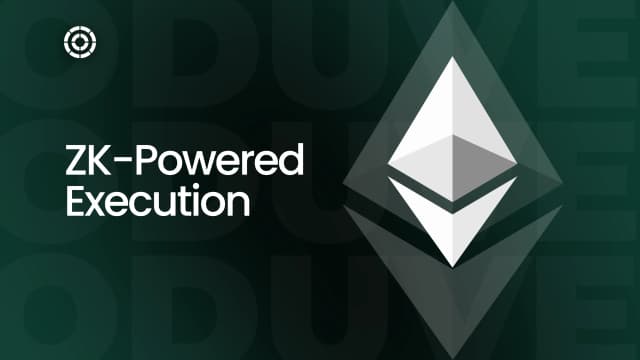
Oct 3, 2025
ZK-Powered Execution
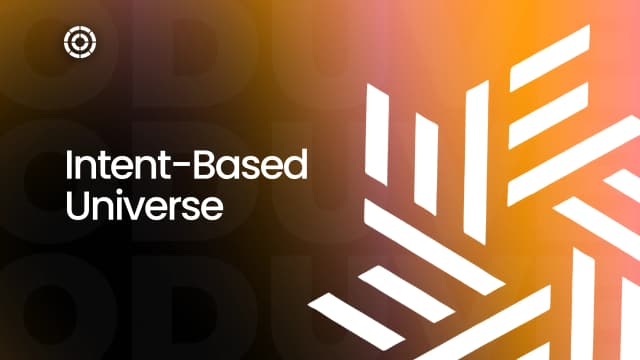
Sep 1, 2025
Intent Based Universe
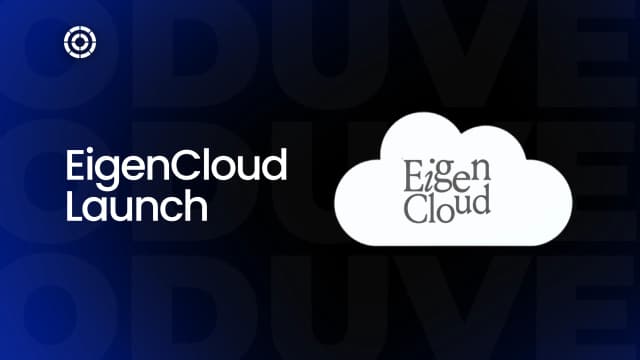
Sep 1, 2025
EigenCloud is live

Sep 1, 2025
CLOBs

Jun 6, 2025
ERC for Chain Abstraction

May 22, 2025
Proving in the modular Ecosystem
Recent Blog
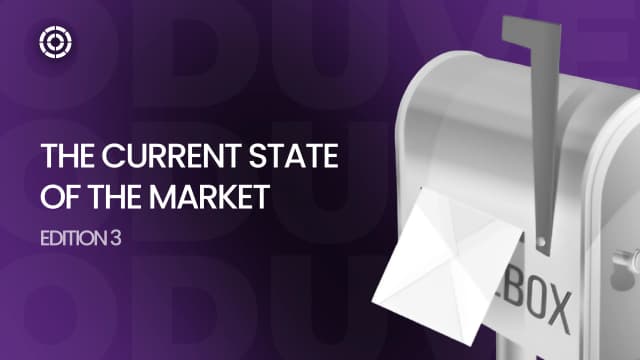
Oct 15, 2025
The Current State of the Market Edition 3
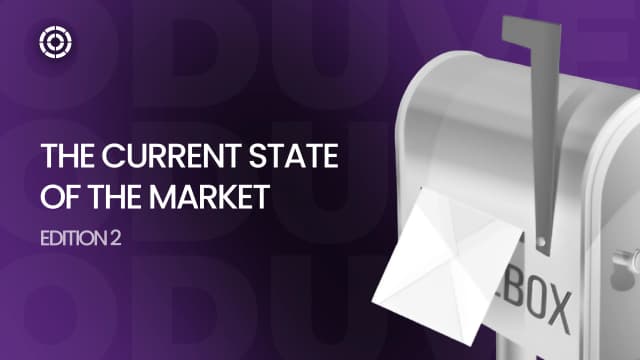
Oct 8, 2025
The Current State of the Market, Edition 2

Oct 3, 2025
ZK-Powered Execution

Sep 22, 2025
The Current State of the Market, Edition 1
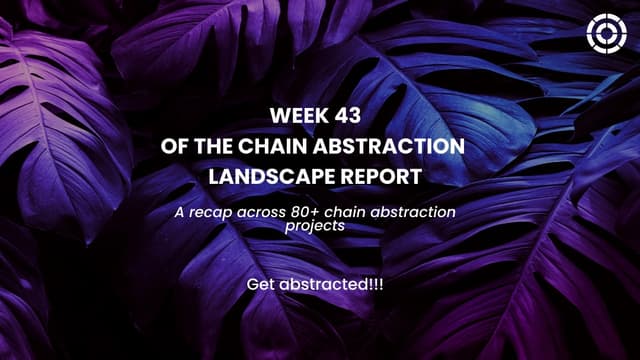
Sep 7, 2025
Sunny Abstraction Chills Edition 43

Sep 1, 2025